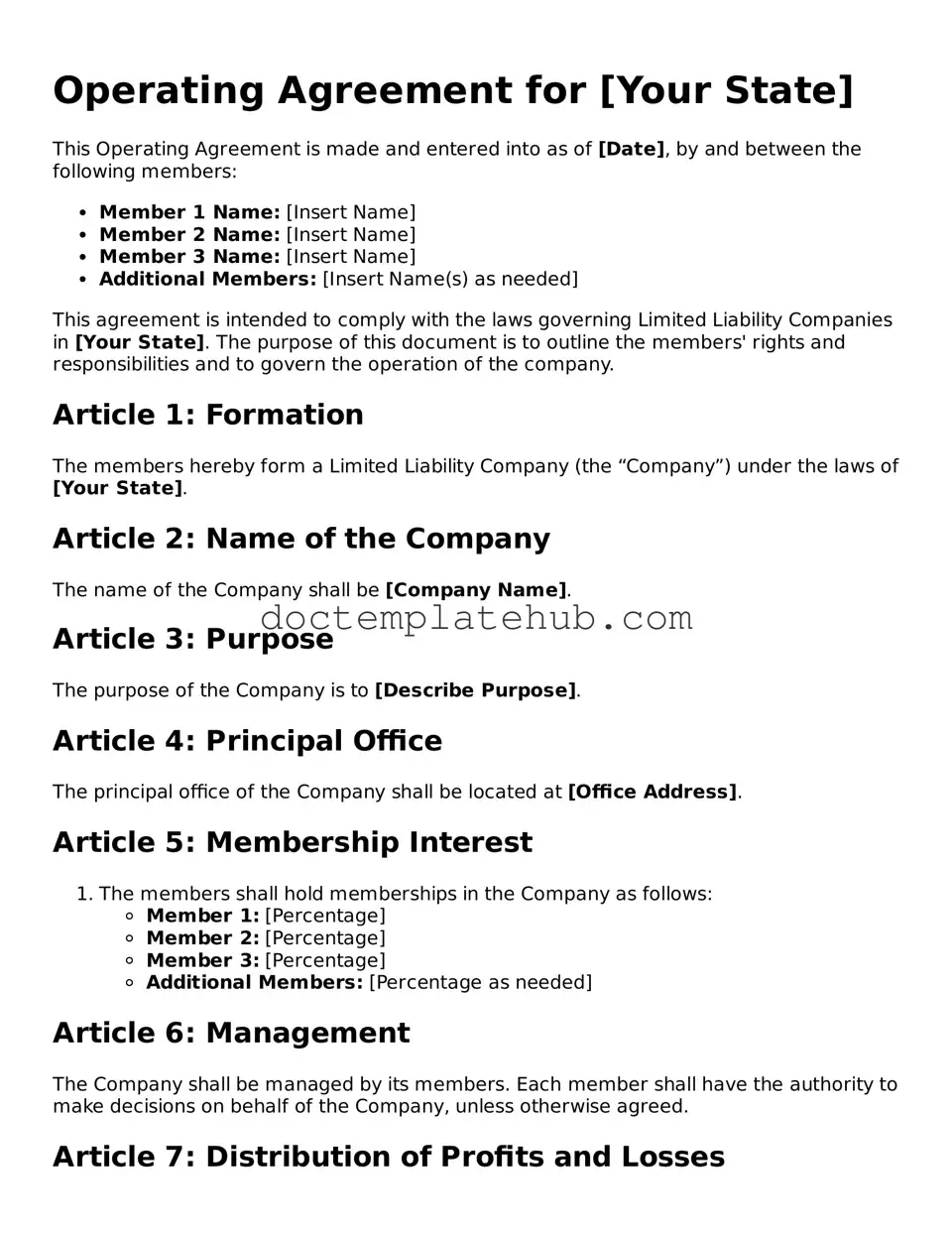An Operating Agreement is similar to a Partnership Agreement, which outlines the terms and conditions of a partnership between two or more individuals or entities. Both documents detail the roles, responsibilities, and obligations of each partner, ensuring clarity in operations and decision-making processes. They serve to protect the interests of all parties involved and provide a framework for resolving disputes.
Another comparable document is the Bylaws of a corporation. Bylaws govern the internal management of a corporation, specifying the rules for meetings, voting, and the roles of officers and directors. Like an Operating Agreement, Bylaws establish the structure and operational procedures, ensuring that all members understand their rights and responsibilities within the organization.
A Shareholder Agreement is also similar, particularly for corporations. This document defines the relationship between shareholders, outlining their rights, obligations, and procedures for buying or selling shares. Much like an Operating Agreement, it aims to prevent conflicts and provide a clear framework for governance and decision-making among shareholders.
The LLC Membership Agreement shares similarities with the Operating Agreement, particularly for limited liability companies. This document outlines the rights and duties of members, including profit sharing, management structure, and procedures for adding or removing members. Both agreements aim to protect member interests and clarify operational protocols.
A Joint Venture Agreement is another related document. It establishes the terms of collaboration between two or more parties for a specific project or business activity. Like an Operating Agreement, it outlines each party's contributions, responsibilities, and profit-sharing arrangements, ensuring all parties are aligned in their objectives.
The Franchise Agreement is comparable as well, detailing the relationship between a franchisor and franchisee. This document specifies the rights and obligations of both parties, including fees, operational guidelines, and brand usage. Similar to an Operating Agreement, it ensures that both parties understand their roles and responsibilities in the business relationship.
A Non-Disclosure Agreement (NDA) can also be likened to an Operating Agreement in the sense that both documents protect sensitive information. While an NDA specifically focuses on confidentiality, an Operating Agreement may contain clauses that address the handling of proprietary information within the company, ensuring that all members respect confidentiality.
The Employment Agreement is another similar document, outlining the terms of employment for individuals within an organization. It details roles, responsibilities, compensation, and termination procedures. Like an Operating Agreement, it establishes clear expectations and can help mitigate disputes between employers and employees.
A Buy-Sell Agreement is comparable, particularly for closely-held businesses. This document outlines the procedures for buying out a departing owner’s interest in the business. Similar to an Operating Agreement, it provides a clear process for ownership transitions and helps prevent disputes among remaining owners.
Lastly, a Loan Agreement shares similarities with an Operating Agreement in that it governs the terms of a financial arrangement. It specifies the rights and obligations of the borrower and lender, including repayment terms and interest rates. Both agreements aim to protect the interests of the parties involved and provide clarity on financial responsibilities.
